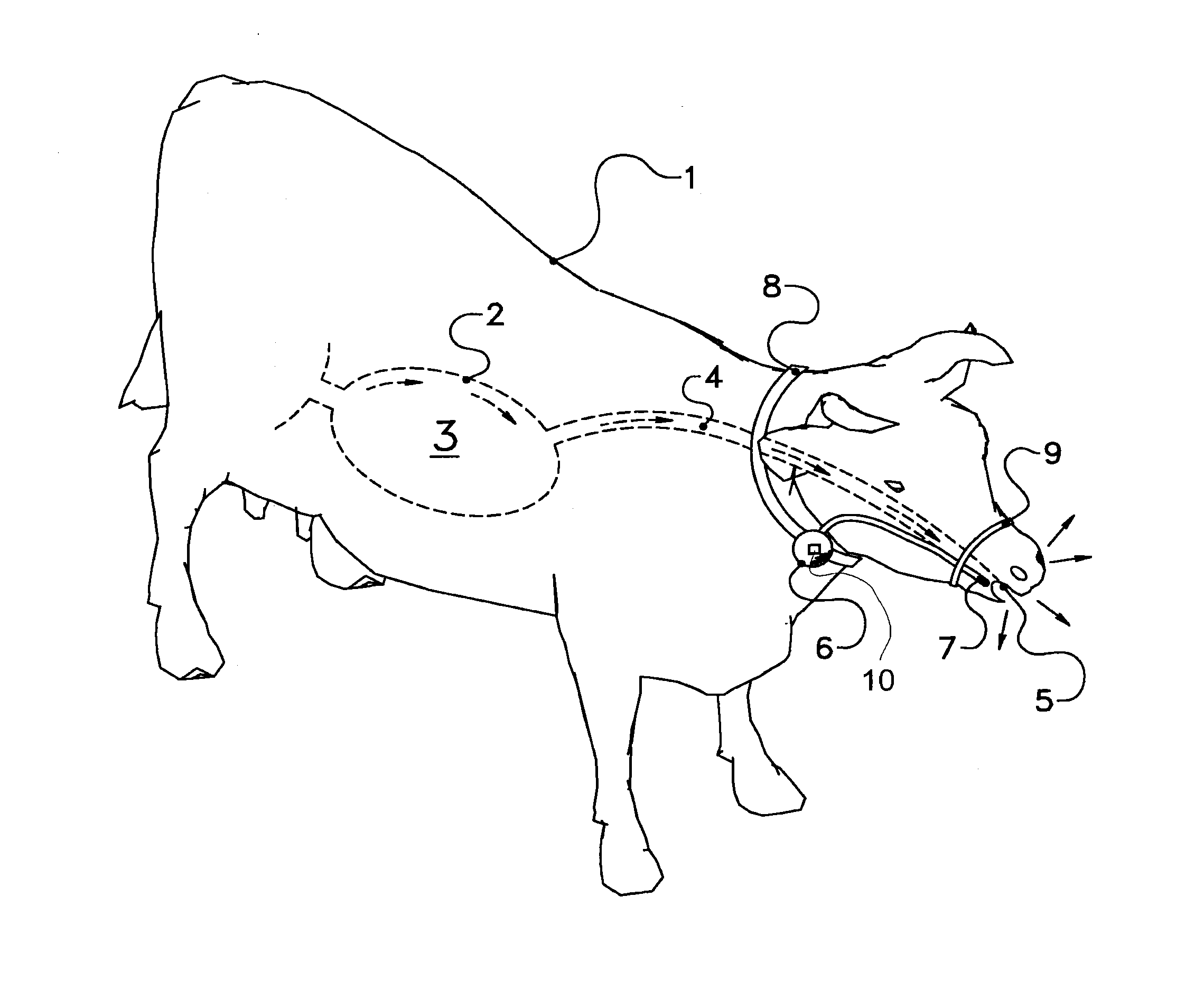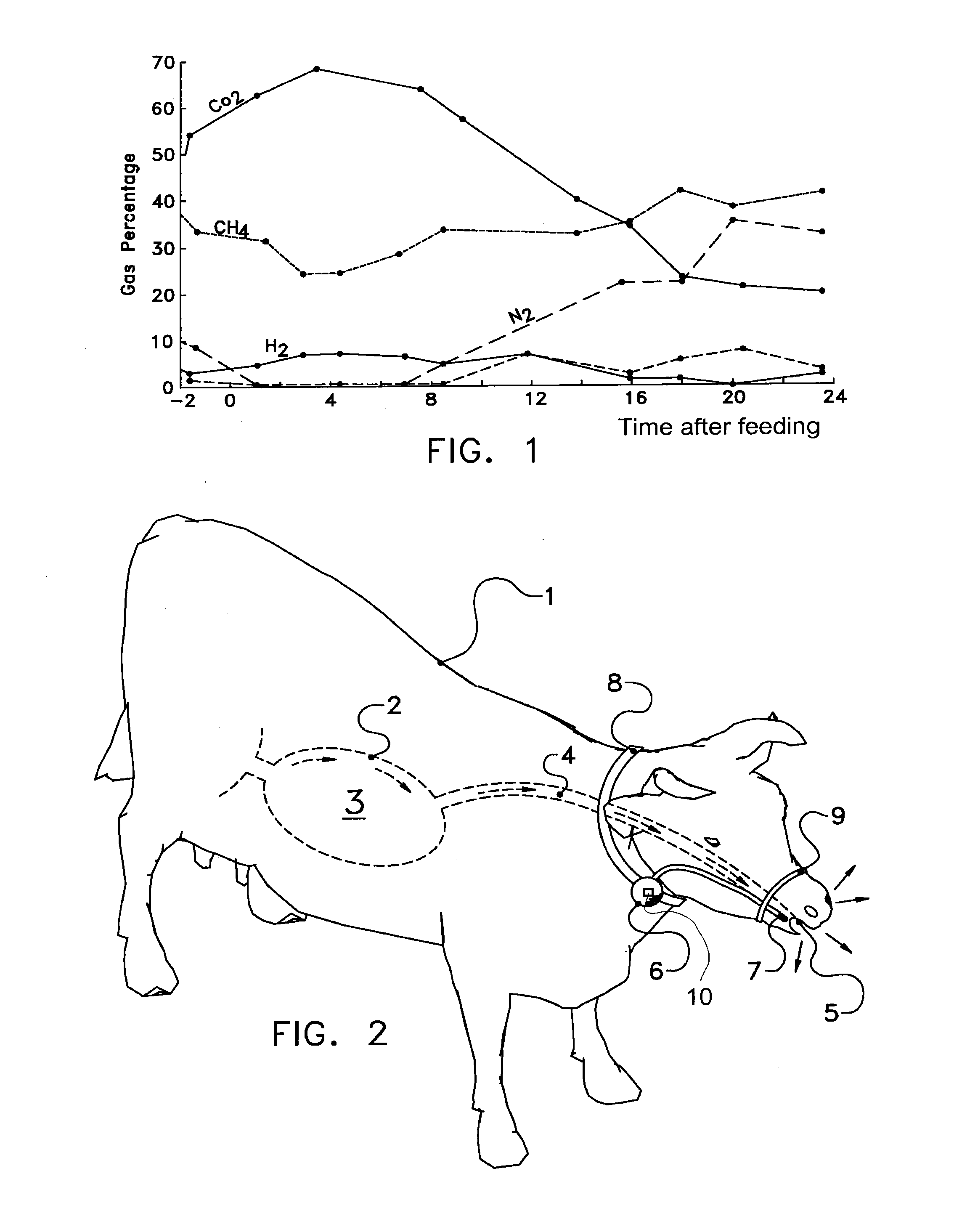Method and device for determining greenhouse gas, in particular methane, emitted by a ruminant, in particular a diary animal
a technology of methane and ruminant, which is applied in the field of methods and devices for determining greenhouse gas, can solve the problems of significant loss of energy for the animal, and the known method is less suitable for application in the case of entire herds of animals, and achieves the effect of increasing accuracy and determining more accurately
- Summary
- Abstract
- Description
- Claims
- Application Information
AI Technical Summary
Benefits of technology
Problems solved by technology
Method used
Image
Examples
Embodiment Construction
[0033]The following is a description of certain embodiments of the invention, given by way of example only and with reference to the drawings. The diagram in FIG. 1 shows the composition of gut gas as a function of time, for a milking cow with a diet of alfalfa, hay and grain. It can be seen that the proportion of methane varies very little, and is continuously around 35±5%. This constancy in composition, which then also applies to the composition of eructated gas, constitutes a basic insight of the invention. It should be noted that the proportion may of course be dependent on the diet, the animal species or the animal race, etc. It can also be clearly seen that the proportion of carbon dioxide varies so substantially through time that a reliable total measurement from simple counting is not possible. Nevertheless, counting of the eructations will always be able to provide an indication of changed circumstances.
[0034]FIG. 2 shows schematically a device according to the invention. H...
PUM
| Property | Measurement | Unit |
|---|---|---|
| time duration | aaaaa | aaaaa |
| time | aaaaa | aaaaa |
| optical | aaaaa | aaaaa |
Abstract
Description
Claims
Application Information
 Login to View More
Login to View More - R&D
- Intellectual Property
- Life Sciences
- Materials
- Tech Scout
- Unparalleled Data Quality
- Higher Quality Content
- 60% Fewer Hallucinations
Browse by: Latest US Patents, China's latest patents, Technical Efficacy Thesaurus, Application Domain, Technology Topic, Popular Technical Reports.
© 2025 PatSnap. All rights reserved.Legal|Privacy policy|Modern Slavery Act Transparency Statement|Sitemap|About US| Contact US: help@patsnap.com


